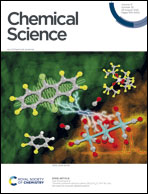Reversing the dendrite growth direction and eliminating the concentration polarization via an internal electric field for stable lithium metal anodes†
Abstract
Lithium (Li) dendrite growth is a long-standing challenge leading to short cycle life and safety issues in Li metal batteries. Li dendrite growth is kinetically controlled by ion transport, the concentration gradient, and the local electric field. In this study, an internal electric field is generated between the anode and Au-modified separator to eliminate the concentration gradient of Li+. The Li–Au alloy is formed during the first cycle of Li plating/stripping, which causes Li+ deposition on the Au-modified side and lithium anode electrode, reversing the lithium dendrite growth direction. The electrically coupled Li metal electrode and Au-modified film create a uniform electric potential and Li+ concentration distribution, resulting in reduced concentration polarization and stable Li deposition. As a result, the Au-modified separator improves the lifespan of Li‖Li batteries; the Li‖LiFePO4 cells show excellent capacity retention (>97.8% after 350 cycles), and Li‖LiNi0.8Co0.1Mn0.1O2 cells deliver 75.1% capacity retention for more than 300 cycles at 1C rate. This strategy offers an efficient approach for commercial application in advanced metallic Li batteries.



 Please wait while we load your content...
Please wait while we load your content...